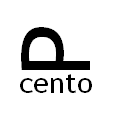Percent sign
| Punctuation marks | ||||||||||||||||||||||||||||||
|---|---|---|---|---|---|---|---|---|---|---|---|---|---|---|---|---|---|---|---|---|---|---|---|---|---|---|---|---|---|---|
|
||||||||||||||||||||||||||||||
| In other scripts | ||||||||||||||||||||||||||||||
| Related | ||||||||||||||||||||||||||||||
|
| ||||||||||||||||||||||||||||||
The percent sign (%) is the symbol used to indicate a percentage (that the preceding number is divided by one hundred). It is represented in Unicode by U+0025.
Related signs include the permille sign ‰ (Unicode: U+0025) and the per ten thousand sign ‱ (Unicode: U+2031; also known as a basis point), which indicates that a number is divided by one thousand or ten thousand respectively. Higher proportions use parts-per notation.
Evolution
The symbol evolved from a symbol similar except for a horizontal line instead of diagonal (c. 1650), which in turn evolved from an abbreviation of "P cento" (c. 1425, from the Italian per cento "for a hundred")[1].
Usage in computers
In Unicode, there is also an "ARABIC PERCENT SIGN" ("٪"U+066A), which has the circles replaced by square dots set on edge.
In computing, the percent character is also used for the modulo operation in programming languages that derive their syntax from C. The ASCII code for the percent character is 37, or 0x25 in hexadecimal. In the textual representation of URIs, a % immediately followed by a 2-digit hexadecimal number denotes a UTF-8 octet specifying (part of) a character that might otherwise not be allowed in URIs (see percent-encoding). Names for the percent sign include percent sign (in ITU-T), mod, grapes (in hacker jargon), and the humorous double-oh-seven (in INTERCAL).
-
"%" in the 15th century, an abbreviation of per cento
-
"%" in the 17th century, with only the o from cento remaining
-
"%" as soon as the 18th century; note the diagonal line
See also
References
- ^ Weaver, Douglas. "The History of Mathematical Symbols". Retrieved 2006-07-18.
